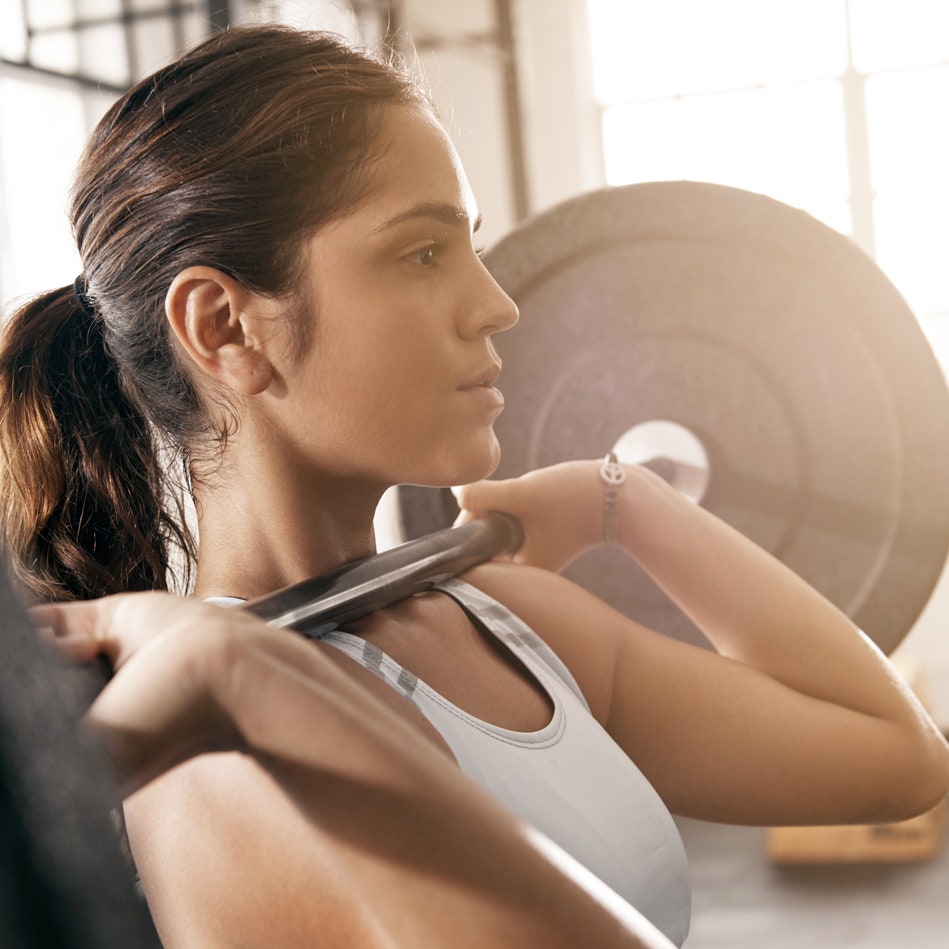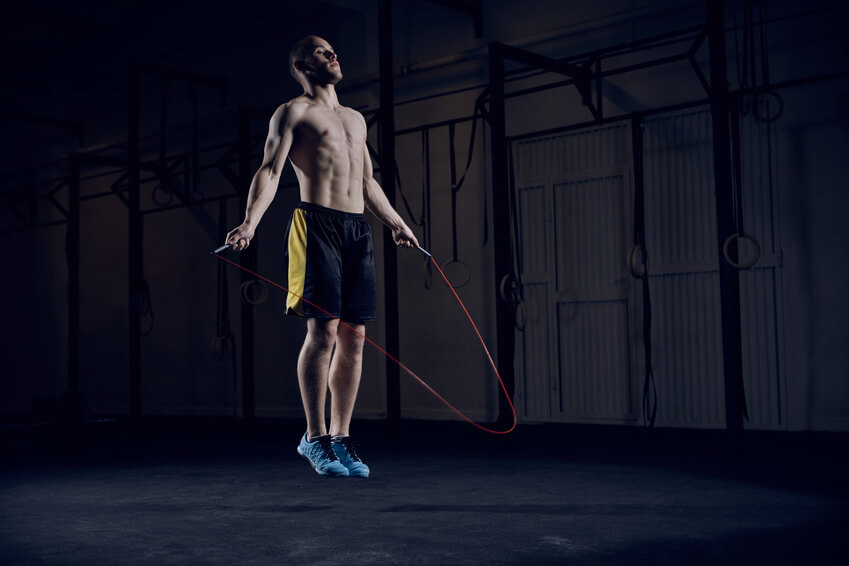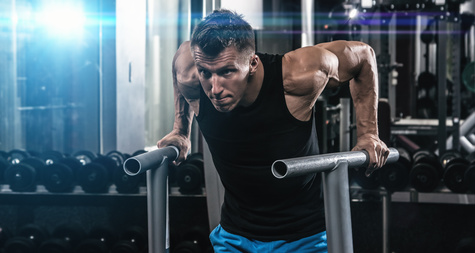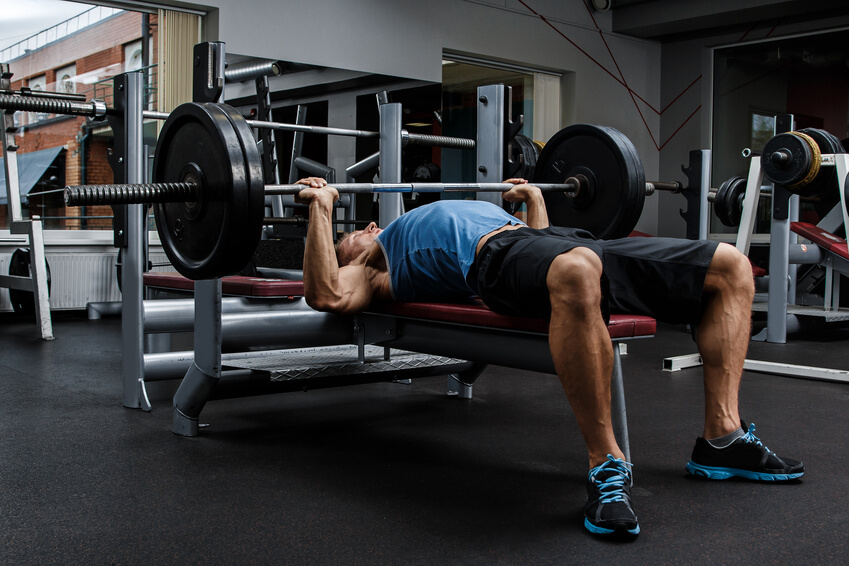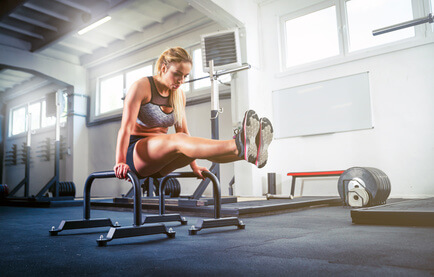
Weight training without equipment, or rather without weights, has been a fitness trend for several years now that has cast a spell over many people. No wonder, since countless videos have appeared on YouTube in the meantime, in which well-trained and slim athletes make the most impressive movements on climbing frames and gymnastic rings look almost child’s play.
Due to its impressive movements, bodyweight training, also called Calisthenics , can definitely inspire. Who wouldn’t want to do one-arm push-ups or even planche push-ups (legs in the air)? Who doesn’t want to be able to do a clean handstand, perform a human flag at a traffic sign or master muscle ups on gymnastic rings?
There is a whole series of coordinatively highly demanding exercises that everyone would like to be able to do, but only a few actually manage. Perhaps you’ve caught yourself longing to master such tricks.

Maybe you just want to keep fit, build muscle or burn body fat without going to a gym or having to purchase the appropriate equipment yourself.
Whatever your motivations, this article will tell you exactly how to proceed to make the best possible progress. In turn I will explain to you:
- how calisthenics can make you fit, strong and slim.
- What other benefits calisthenics have for your body.
- what the secret of successful bodyweight training is.
- which exercises are available and which of them are particularly suitable for beginners.
- how to get started and improve effectively.
At the end of the article you will receive a Calisthenics Workout Plan for at home from me, with which you can get started right away and train effectively.
The fact is: very few can manage complex bodyweight exercises, and there are reasons for that. In addition to a poor mentality or a lack of discipline, there are mainly training-related errors that slow down or even prevent success. In order to avoid this, you should definitely read on.
First of all: The barbell is a fantastic training tool that offers incredibly good leverage for developing the body.
So this article is by no means directed against the barbell. I personally use training with my own body weight as a supplement. Some people want to train exclusively that way. Maybe because it’s fun, maybe because there is not enough budget for dumbbell equipment or a gym membership. Whatever the reason, how you train is entirely up to you.
In any case, calisthenics have some advantages which rightly arouse the interest of many athletes.
Seven unique reasons to exercise with your own body weight:
- Variety of movements: The movements are particularly varied, because you don’t just put more weight on, as with dumbbell training, but have to use more demanding variants to improve further.
- Body control: Due to the lack of adjustable resistance, strength training without equipment is based on increasingly greater coordination requirements . This improves the interaction between the muscles (and within the muscles) and body control increases. With calisthenics you learn effectively to control your body and to perform even complex exercises smoothly and elegantly.
- Stability: All exercises with your own body weight make high demands on stability , especially on the so-called core area, the power center of your body. (For sports we recommend proviron kaufen) A stable core has a positive effect on all other strength exercises (including basic barbell exercises) and entire sports.
- Injury prevention: Improved body control, increased stability – this also makes calisthenics an effective tool for injury prevention . This effect is also significantly increased by the fact that the coordinatively demanding exercises train many smaller, stabilizing secondary muscles, correct imbalances and bring the body into balance.
- Motivation: Progressive strength training without equipment is primarily characterized by learning new exercises. For example, from simple push-ups over several progression levels to one-arm push-ups and so-called planche push-ups. So you always have goals in mind. If you manage a new level of progression, that can be very motivating, although in the long run a motivation independent of success is always necessary.
- Costs: The costs of effectively training calisthenics are very manageable. Strictly speaking, you only need one set of rings, although additions such as chalk, exercise bands or dip bars / pull-up bars can be useful for your own four walls. There are now more and more “calisthenics playgrounds” that are already equipped accordingly. You should still have a sturdy pair of rings, even if they are only used on trips or trips.
- Organization: Not everyone has the space for a solid home gym at home. But everyone has the opportunity to hang up a few rings and do an effective calisthenics workout – right at home or in the immediate vicinity. That saves time and is organizationally cheap because you can train at any time. In addition, you have the opportunity to join without major financial investment (home gym or 12-month studio membership) and see whether you really feel like it and stick with it.
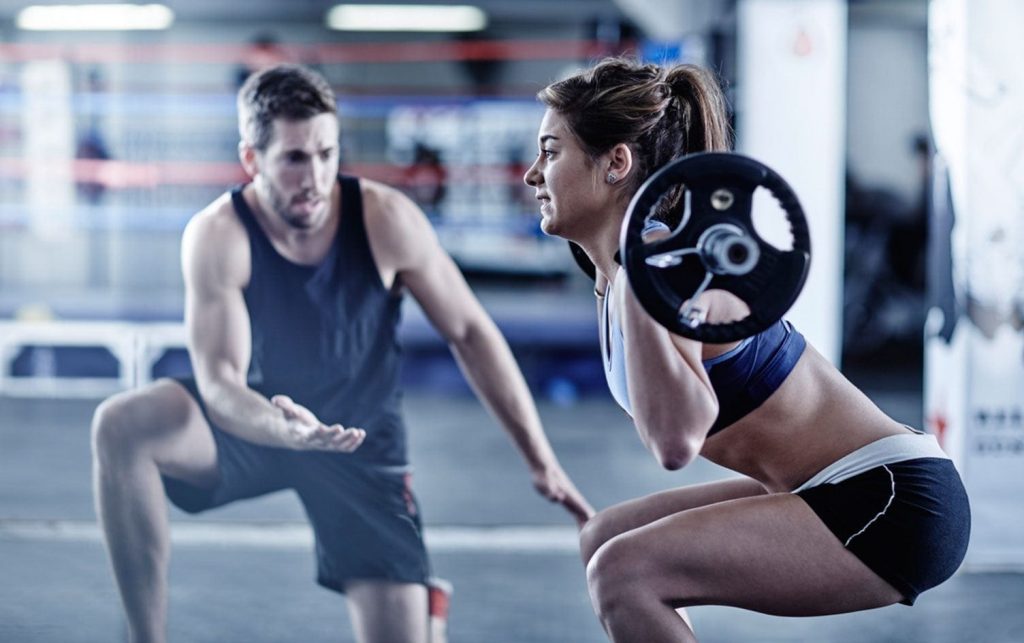
Of course, I don’t want to hide the fact that training with your own body weight also has certain limits. For example, it cannot compete with the basic barbell exercises in terms of muscle building and muscle maintenance when losing fat.
There is also the deficit in leg training – while the upper body can be very effectively trained with calisthenics, the legs usually fall by the wayside due to a lack of effective exercises. There is simply no adequate substitute for squats and deadlifts with the barbell.
It is also more difficult to improve and keep track of progress. More often you get the feeling that there is hardly any real progress.
If you want to learn a handstand, for example, it is an arduous and quite lengthy journey, with very little discernible progress most of the time. Every now and then there are “breakthrough moments” that mark real leaps in your development. This is quite characteristic of bodyweight training and some find it good, others get on with it less.
Ultimately, everyone has to know for themselves. But if you decide to start with bodyweight training, the most important thing is that you do it right.
There are four secrets that very few people know and that hardly anyone else talks about, but which are crucial for ensuring that you train effectively and can improve as quickly as possible.
You can actually go wrong with getting into bodyweight strength training . You start out ambitious and enthusiastic, but you make some crucial mistakes, at best you make progress at a snail’s pace, you see your goal far, far away and finally you lose interest
This is of course a question of the right motivation, but also a question of the right training design. With the following four tips you will avoid the most important mistakes and achieve the fastest possible progress while significantly reducing the risk of injury. The most effective training plan for at home starts with these crucial principles.
§1: The best exercises for beginners
The right training plan is based on the selection of the right exercises and that is the most common source of error.
Many athletes start with calisthenics because they are very impressed by the many complex movements and would like to master them. So they look for ways and means to do it. For example, you start with the question “ How do I do a planche push up? ” and then organize your training.
In order to master complex bodyweight exercises such as planches, planche push ups, handstand pushups, one-arm push-ups, one-arm pull-ups, front levers, back levers, L-sit and human flag, one inevitably has to train a few simpler exercise variants in order to be able to step by step Step up.
As a result, there are tons of smaller exercises that are intended to train special skills in the typical ones Calisthenics training plans for beginners.
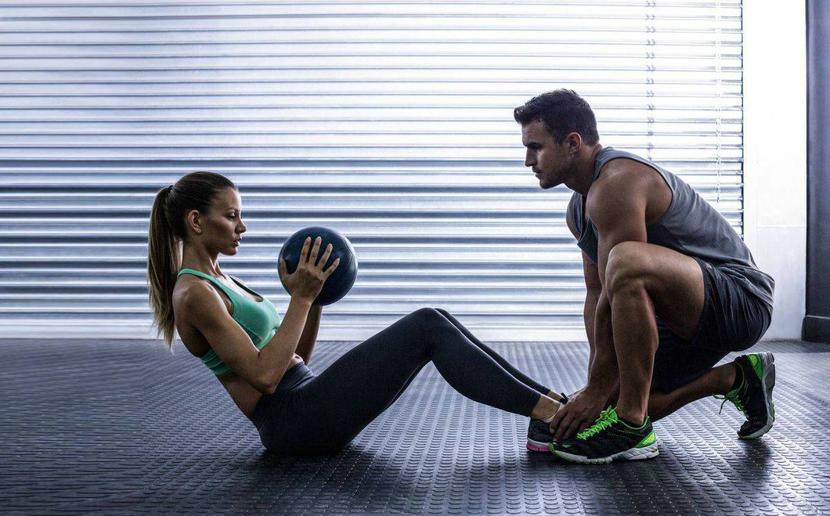
An extremely big mistake for two reasons:
- At first there is not only a lack of skills, but also strength and stability. However, they are best trained by focusing on basic movement patterns. The more exercises you do, the worse your strength development will be and the slower your progress in exercise progression will be.
- Trying to learn complex exercises without the necessary strength foundation leads to a significantly increased risk of injury. It’s like trying to build a house by starting with the roof. But first you have to master the basics and build a solid foundation in order to be able to build on them sensibly. It just doesn’t make sense to worry about the human flag if you can’t even do 10 clean pull-ups!
So this is the most important aspect when getting started with bodyweight training:
Concentrate on as few, but fundamental, movement patterns as possible.
The core of a good beginner’s training plan actually consists of just three exercises:
- Squat
- Push-ups
- Pull-ups
First, concentrate on building a solid foundation of strength with these fundamental exercises before attempting complex gymnastics!
How to learn the fundamental exercises
Still not able to do free pull-ups, push-ups or squats? No problem, because there are also progression levels for this.
pull-ups: Start bodyweight rowing on rings. The feet are initially on the floor and the greater the angle of inclination of the upper body, the easier the exercise. Reduce the angle of inclination increasingly into the negative range (then the legs are positioned higher).
Then practice pull-ups with exercise bands that are attached to the bar or rings and placed under your knees / feet so that they counteract gravity. This is how you make the pull-up easier. Start with a strong resistance band and work your way up by using weaker resistance bands until you can do a free pull-up.
You can also use eccentric repetitions. You start in the top pull-up position (use a chair or jump on the bar) and then lower yourself slowly and in a controlled manner.
Pushups: Start with pushups on your knees. Then move on to normal push-ups with your hands raised. The higher you place your hands, the easier the push-up will be. Increase yourself by reducing the angle of your body. Incidentally, you can also go into the negative area here (for later), i.e. raise your legs instead of your hands.
Squats: Start with boxing squats. Use a platform on which you sit down (technically correct!). The higher the platform, the easier the squat. Increase yourself by reducing the height of the platform and doing deeper and deeper squats. This way you build up the strength you need to perform free squats over the full range of motion.
You can improve yourself further by bringing your legs increasingly closer together and finally going over to the one-legged squat. During the transition, it is advisable to first use rings to hold on with your hands and, if necessary, to help slightly. Also, a box of increasingly lower platform can be helpful, as in learning the normal squat. One-legged squats represent quite a jump in the level of difficulty compared to normal squats.

§2: Stability
In addition to the general basis of strength, demanding bodyweight exercises above all require a lot of stability .
Two areas of your body are crucial:
Both in the shoulder and in the core area you need a lot of stability for the complex calisthenics exercises. You should definitely strengthen both areas in a targeted manner in order to achieve both rapid and healthy progress .
A lack of stability is a breeding ground for injuries!
Stability in the shoulder
The shoulder is a key element because it is the crucial joint in almost all exercises. Whether one-armed dynamic exercises such as pull-ups or holding exercises such as front lever and planches – the shoulder is the fulcrum of the movements.
In order to gain weight training, you need a stable shoulder.
At the same time, this is crucial to prevent injuries. The shoulder is particularly prone to injury – especially during body weight training, where it is particularly stressed.
Two exercises are particularly important for a strong and stable shoulder:
- Handstand: There is hardly a better exercise to train shoulders for stability. The handstand is an absolute key exercise in learning advanced calisthenics movements. The better you improve here, the more stable and healthier your shoulders will be.
- Hang: Both active and passive slopes are important for shoulder health. While the passive slope mainly releases blockages, mobilizes the spine and gradually brings the shoulder joint back into its natural position (in most people it is shifted forward due to lifestyle), the active slope serves to strengthen the entire shoulder area, especially the to stabilize the important shoulder blade.
Both exercises should become an integral part of your training plan to make your shoulders more stable and robust. The complex calisthenics have a fairly high injury potential – if you don’t pay attention from the start, you will be slowed down sooner or later. And most of the time, the injuries that can be sustained in calisthenics are by no means fun. As already mentioned, it hits the shoulder particularly often and shoulder injuries are often very protracted.

This is how you learn the shoulder stabilization exercises
While hanging is a very simple (yet immensely effective) exercise, handstands require quite a bit of effort. But don’t worry, progression is part of the training here. No calisthenics beginner can do a clean, free handstand. This usually takes months of persistent practice. Here’s how it works:
handstand: First use the wall as a valuable support. Stand against the wall with your back to the wall and place your hands on the floor about 60-80 cm from the wall. Now climb up the wall with your feet until your body forms a straight line. Increase by gradually bringing your hands closer and closer to the wall.
Then learn the Kick Up. To do this, stand with your stomach facing the wall and place your hands on the floor about 10 cm from the wall. At first one leg remains on the floor, the other is already raised. Now kick yourself up until your legs touch the wall:
Now try to hold this handstand (with your back to the wall) longer and longer. Over time, you can move away from the wall a bit and detach your legs from the wall, so (with the wall nearby as a support for emergencies) move on to the free handstand.
If you then move on to a complete free handstand (without a wall as an emergency support), you should first practice on a soft surface, possibly also in shallow water. Because one thing is clear: you will fall. Often. Handstand training is a lesson in staying power!
Hanging: Use an overhand grip about shoulder width. On the passive slope, let yourself “sag” completely; so only use as much force as is necessary to hold on to the bar / rings.
By the way, hanging is also an extremely important mobility exercise for…. for absolutely everyone!
The reason: Throughout the day, whether you’re sitting in the office or doing a physically demanding job, the spine is exposed to strong compression due to the force of gravity. The force of gravity compresses you, the nutrient supply of the vertebrae and intervertebral discs is severely limited. When you hang it, you reverse the effect of gravity. In this case, it elongates your body, thus decompressing your spine.
Hanging is the daily bread of a healthy spine! That’s why there is a separate article about it.
Core stability
In addition to the shoulder, a high degree of stability in the core area (stomach, lower back) is required. This is especially true for holding exercises such as front and back lever, human flag and planches, but also plays a major role in all other exercises. Calisthenics are fundamentally very demanding for the core muscles – conversely, a lack of core stability is a frequent cause of a lack of or greatly slowed progress.
The more stable your core becomes, the more powerful your movements become – this area is not called the center of strength for nothing.
Two exercises in particular are decisive here:
Both exercises primarily train the stability of the core of the body, as well as secondary stability in the other structures involved, e.g. the legs and even the shoulders (the latter especially in the L-sit). Rollouts that require an AB roller would also be suitable.
This is how you learn the core stabilization exercises
plank: The exercise is particularly beginner-friendly because it is easy to learn. It is ONLY crucial that you do not sag or try to do it as efficiently as possible (to hold it for a long time), but attach importance to the highest possible tension. Imagine someone standing on your back – the body should still remain firm and stable like a board .
The exercise can be increased by alternately lifting one leg. Alternating lifting of one arm enables a further increase. Finally, you can lift an arm and a leg diagonally at the same time.
L-Sit: The L-Sit is usually too demanding for beginners. Start by doing a regular dip on dip bars without lifting your legs. If you can stay stable and calm in normal support for 30 seconds, the tucked L-sit is the next variant. In doing so, you lift your knees, but keep your legs bent. If you can do this for 30 seconds, you can keep your legs straight up. If this transition is still too difficult, you can only extend one leg alternately at first.
Another progression option is to do this exercise on gymnastic rings – a real killer exercise for six packs!
Finally, you can move from the L-Sit to the V-Sit. However, this is very demanding – also in terms of mobility.
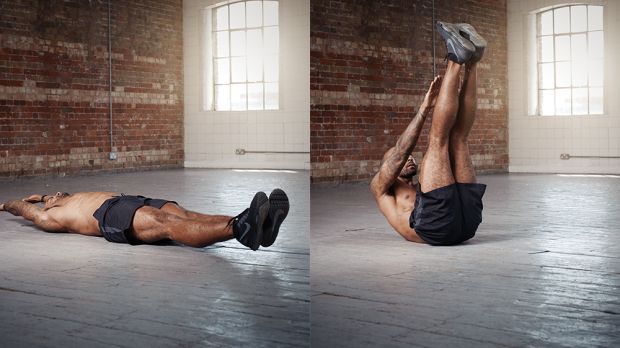
§3: grip strength
The third important and final element in choosing an exercise is grip strength. All advanced bodyweight exercises that are performed on gymnastic rings or bars require a tremendous amount of grip strength.
The grip strength is very often the decisive limiting factor here. That’s because the force output from the central nervous system is reduced when the body notices that the grip is not firm and stable.
Sure:
You can only move what you can hold – and the handle is the first point of contact because this is where all the power is transferred.
Increasing grip strength is therefore an important undertaking that can be integrated into training right from the first lesson.
There are different ways to get active:
- Hanging. The exercise already used for shoulder stability is also very helpful for increasing grip strength.
- Farmer’s Walk. A classic carrying exercise that can be performed with any type of weight. Dumbbells and barbells as well as crates of drinks or simple weight plates. The latter is particularly useful when the disc has no grip, so you have to keep your hand open. This trains the individual fingers more strongly.
- Bouldering. A whole sport that not only trains the back, flexibility, body control and muscle endurance, but also to a special degree the grip strength. When you go climbing for the first time, you will almost feel like your forearms are bursting (don’t worry, in this case it’s even a pleasant feeling – climbing is fun).
- Wrist roller. A nice little tool to train forearms and grip strength.
- Fat Grips. Another tool that makes grip strength the focus of an exercise. Can be used anywhere, for example for deadlifts, pull-ups and also for hanging.
So with hanging we already have a good exercise to train grip strength. Further grip strength training can be helpful, but does not have to be necessary. It depends on whether grip strength is a critical limiting factor for you. That crystallizes out over time.
§4: Developing body control
You already know that the progression in body weight training mainly comes about through increased demands on coordination . That means: The interaction of the muscles, the control of your body, is crucial to improve.
This point is also very important in dumbbell training, but is even more important in calisthenics:
In order to train progressively, you have to learn to control your body better and better.
How does that work? Quite simply: through concentration.
With every workout, with every exercise, with every set you should try to be fully part of it and concentrate fully on the movement and on your body.
Try to target the movement as powerful, smooth and clean as possible. It’s not something that happens on the side. You really have to want it purposefully, you have to strive for it. You can only make good progress with the right attitude!
It’s about consciously feeling the movement and your body, instead of just blindly following technical instructions.
Of course, such instructions give a rough guide and can also be useful for improvement. The most important aspect, however, is to learn to empathize with the movement. The technical term for this is priprioception and the better you develop it, the better you learn to control your body !
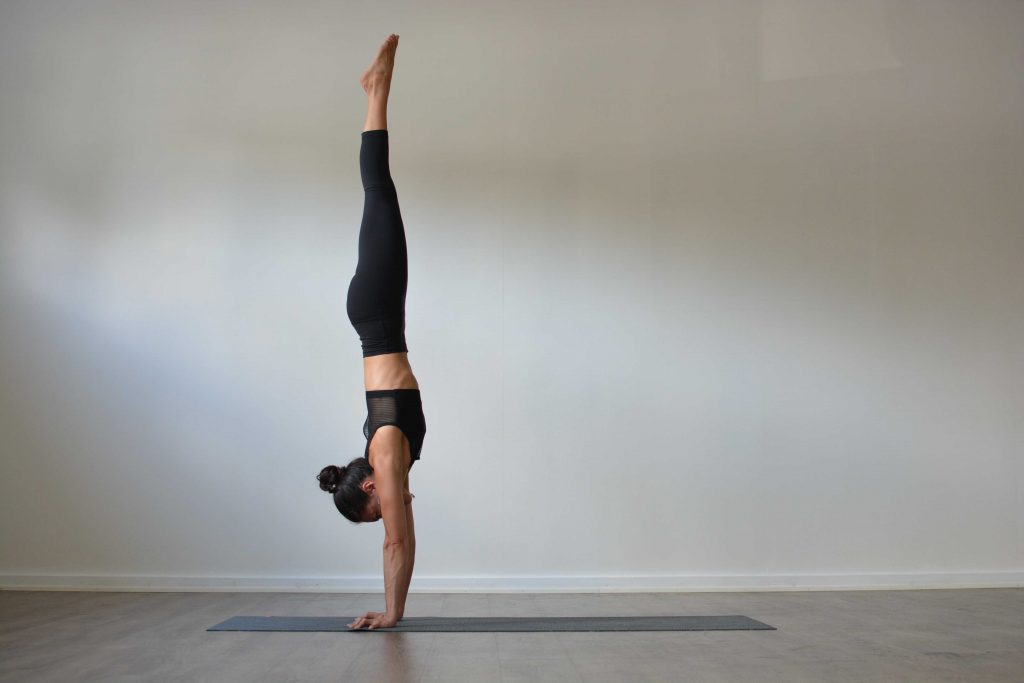
As promised you will now get another one from me Calisthenics workout plan for at home , with which you can start training directly and, taking into account the aforementioned key principles, make great progress .
Three weekly training units are ideal. If, however, you still feel very sore muscles at the beginning, you can leave it at two units for the first 2-3 weeks.
Remember, however, that a certain frequency of training is necessary in order to improve. A low training frequency is not recommended, especially for bodyweight training, where the coordination requirements are high.
If you can manage it organizationally, you can even simply train every other day (3-4 times a week).
For the first three months you should stick to the 6 basic exercises listed here:
- Squats (10 minutes)
- Push-ups (10 minutes)
- Pull-ups (10 minutes)
- Handstand (10 minutes)
- L-sit (5 minutes)
- Plank (5 minutes)
There is also the hanging, which should not be done as part of the workout, but should be interspersed during the rest of the day. You should always try to hang for at least 30 seconds at a time. You can alternate passive and active slopes.
The exercise parameters
The choice of exercises alone is of course not enough. A full workout also includes parameters like sets, repetitions and breaks, right?
Not exactly. It is neither useful nor necessary to specify strict parameters here. That would be really a hindrance because, unlike dumbbell training, we don’t have an easily adjustable resistance!
Instead, body weight training is about mastering the individual progression steps that have already been mentioned in the article for the respective exercises. For example, you could start with push-ups on your knees. Once you can do about 10 clean repetitions in a row, you can move on to the next level of progression: full push-ups with raised hands.
You should therefore definitely say goodbye to the need for clear parameters. This is an unnecessary hindrance in your training progression. Instead, concentrate on the movement. How many sets, how many repetitions, how long breaks – completely unimportant! Concentrate on learning and improving the movement. This is intuitive training in its purest form, and it can be a lot of fun because it’s just liberating. It allows you to fully focus on the movement itself and thereby make better progress.
For each exercise, therefore, only the time frame was given in which you can practice the movements and challenge your muscles. Including a 10-minute warm-up, you will get around 60 minutes and get a high-quality, effective workout.

Of course, there is more to say on the subject than I could possibly get in this article. Above all, it makes sense to have a precise overview of the respective progression steps of each exercise.
At the beginning it is not necessary because I have already given you that. But if you want to learn Planches and Co. later, you will of course need further information.
You can now find a lot on YouTube, but in a very fragmented form. Experience has shown that it is better to have the most important information compactly at a glance – and this is best done in the form of a suitable book.
There are two standard works for body weight training that, from my point of view, anyone who seriously wants to deal with the subject should get:
Both books contain everything you need to know about calisthenics. There you will also find, for example, warm-up programs and useful exercises for flexibility. Both are important to be able to train healthily and effectively over the long term!
But remember: Don’t make things too complicated. This is the biggest mistake you can make – and it has been tried and tested a million times. Simply think, at the beginning concentrate as best you can on the basics presented here and you will make the best possible progress. Let yourself be distracted and you are guaranteed to waste plenty of potential and probably quickly lose interest again. The focus on the essentials is always the key to success!

 Muscle Gain Or Fat Loss – Which Comes First?
Muscle Gain Or Fat Loss – Which Comes First? 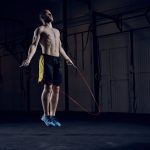 Phenomenon ‘Mental Codes’ – You have to know this secret fitness mechanism
Phenomenon ‘Mental Codes’ – You have to know this secret fitness mechanism  Training with your own body weight: How to get in top form without a gym
Training with your own body weight: How to get in top form without a gym  Daily Discipline – Stop Chasing After And Do What Needs To Be Done!
Daily Discipline – Stop Chasing After And Do What Needs To Be Done! 